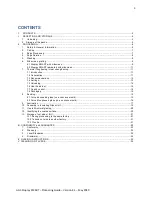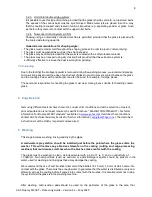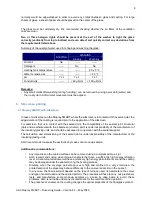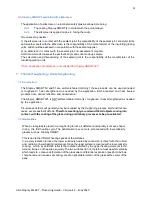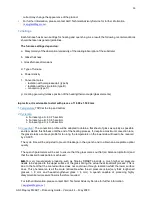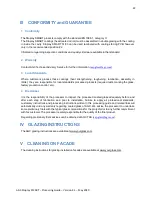
13
AGC Stopray SMART
–
Processing Guide
–
Version 4.1
–
May 2020
correct may change the appearance of the product.
For further information, please contact
AGC Technical Advisory Service for further information
7.4 Settings
Each furnace has its own settings for heating and quenching. As a result, the following recommendations
should be taken as general guidelines.
The furnace settings depend on:
a.
Dissymmetry of the absorption (emissivity of the coating/absorption of the substrate)
b.
Glass thickness
c.
Glass/furnace dimensions
d.
Type of furnace
e.
Power density
f.
Convection rates
• radiation with compressed air (type A)
• radiation with re-circulation (type B)
• convection (type C)
g.
Heating geometry (relative position of the heating/thermocouple/glass elements)
In practice, it is advisable to start with pieces of 1,500 x 1,500 mm
1.
Temperature
700°C at the top and bottom
2.
Cycle time
a.
Furnace type A : 60 -75 sec/mm
b.
Furnace type B : 50 -55 sec/mm
c.
Furnace type C : 40 -45 sec/mm
3.
Convection
:
The convection profile will be adapted to obtain a flat sheet of glass as quickly as possible
and to maintain this flatness until the end of the heating process. If, despite a maximum convection rate,
the glass retains a concave profile for too long, the temperature on the lower side will need to be reduced
by 20-30°C.
The cycle time will be adjusted to prevent breakage in the quench and to obtain an acceptable optical
quality.
The quench parameters will be set to ensure that the glass comes out flat (air balance top/bottom) and
that the desired break pattern is achieved.
NB
For very low-emissivity products, such as Stopray SMART products, a much higher air pressure
needs to be applied to the upper surface of the glass during the actual heat treatment process. This is
due to the fact that the coated surface does not cool down through radiation whilst the lower surface
does. This phenomenon is all the more noticeable when the air pressure is low (very thick toughened
glasses > 8 mm and heat-strengthened glass > 6 mm). A quench capable of producing highly
dissymmetrical air pressure flows is therefore required.
For further information, please contact
AGC Technical Advisory Service for further information



